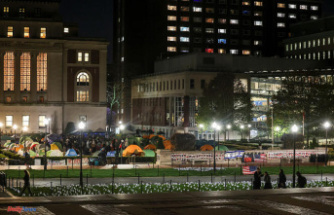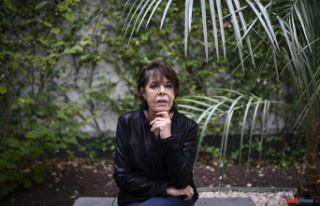Back to square one for Guantanamo? On September 17, the administration of the President of the United States, Joe Biden, placed an advertisement, spotted by the NBC News channel, on the SAM.gov site where the federal government's public contracts are published.
It is looking for a private contractor capable of managing the Guantanamo Migrant Operations Center (MOC), a detention center for migrants located at the United States naval base in Guantanamo Bay, Cuba, on behalf of Immigration and Customs Enforcement (ICE), the United States Department of Homeland Security (DHS) agency responsible for border control. The deadline for submitting an application has been set for October 1.
The detention center is located a few dozen meters from the Guantanamo prison where, in the months following the September 11 attacks, the American army hastily locked up, in defiance of their rights, hundreds of men suspected of having links with Al-Qaeda. Thirty-nine people are still detained there, some have obtained the promise of a release that they are still waiting for, others hope for it.
Alongside these symbolic places of American excesses in the fight against terrorism, migrants could soon settle. The announcement specifies that the future MOC, composed of tents and cots, will have to have a capacity of 120 people, but will only accommodate, on average, about twenty people. She adds that the contractor will need to be able to erect temporary facilities that can accommodate up to 400 people. It must be able to provide at least 50 unarmed guards, mobilized within twenty-four hours. Finally, at least 10% of staff must be fluent in Spanish and Haitian Creole.
painful memories
In the United States, the publication of this call for tenders has awakened painful memories and questions, as thousands of Haitian migrants flock to the southern border of the United States, fleeing their country which is undergoing a triple economic crisis, security and health, aggravated by the uncertainty linked to the assassination of President Jovenel Moïse and the earthquake of August 14.
This call for tenders recalls another function that the Guantanamo base has provided for forty years: that of a detention and return center for people hoping to settle in the United States. Located on the southeast coast of Cuba, it borders Haiti from which it is separated only by two straits of the Caribbean Sea. Journalist John Washington recalls in The Dispossessed: A Story of Asylum at the US-Mexico Border and Beyond (Verso, 2020, no translated) that in 1977, the St. Joseph, a ship carrying 101 Haitians hoping to reach the Bahamas and a better life, diverted to Guantanamo to repair damage. The U.S. Navy took in the ship, but, instead of helping with repairs, seized it and attempted to fly the passengers back to Haiti.
Under President George H.W. Bush (1989-1993), the US administration used Guantanamo as a detention center. Between 1991 and 1993, it detained several thousand Haitian asylum seekers there who were trying to reach Florida - up to 12,000 - on behalf of the "HIV Ban". Between 1987 and 2010, these regulations, then applied by the Attorney General (Minister of Justice) at the time, William Barr - who was also Donald Trump's - restricted entry into the United States for people living with HIV.
At the time, refugees and asylum advocates took to court to complain about their treatment, and in June 1993 the New York District Judge sided with them, saying that Guantanamo's so-called "humanitarian mission" was "nothing more than an HIV-positive prison camp". He had obtained that the refugees be released.
"Zone of lawlessness"
The base was used again by the United States military in 1994, as part of Operation "Sea Signal", to respond to the influx of Cuban and Haitian migrants seeking asylum in the United States. . Between 1996 and 2015, 417 migrants passed through this camp and were resettled in third countries, wrote in September 2015 the Office of Population, Refugees and Migration of the State Department. According to the Global Detention Project, the Guantanamo detention center has not received migrants since 2017. Donald Trump dreamed of returning migrants there, writes Miles Taylor, a former member of his administration, in a book entitled A Warning ("A Warning") (Twelve, 2019, untranslated). Joe Biden could get his wish.
"Sending refugees to a place known to be a lawless zone is the last thing the Biden administration should do," said Eleanor Acer, director of refugee protection at Human Rights First. This is yet another blatant attempt to evade US human rights and refugee protection procedures. »
Solicited by the NBC News channel, the DHS ensures that the publication of the announcement is part of the renewal of the contract for the management of the camp, signed in 2002, which expires in 2022. Wanting to cut short the controversy nascent, Marsha Espinosa, public affairs manager for the DHS, wanted to remind, Thursday, September 23, on Twitter that "the DHS does not send and will not send Haitian nationals who arrive at our southern border at Guantanamo Bay" , adding that the tender has nothing to do with the current situation at the border.












